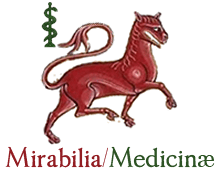Renata Palandri Sigolo SELL, Luis Fernando Bernardi JUNQUEIRA
The unity of opposites: the theory YĪN YÁNG 陰陽 in the book of Chinese medicine HUÁNG DÌ NÈI JĪNG 黃帝內經
A união dos opostos: a teoria YĪN YÁNG 陰陽 no livro de medicina chinesa HUÁNG DÌ NÈI JĪNG 黃帝內經
Published in The Foundations of Bioethics
Keywords: Huang Di Nei Jing – Health History – History of Ancient China..
PDF download:
The HUÁNG DÌ NÈI JĪNG 黃帝內經 is considered one of the most important and valuable books about Chinese medicine. Available evidence suggests that at the basis of HUÁNG DÌ NÈI JĪNG is a layer of texts written during the end of the Warring States period (475-221 B.C), through Qin dynasty (221-206 B.C) and beginning of Western Han dynasty (206 B.C – 9 A.C). Sharing world views with several ancient Chinese philosophical schools, the HUÁNG DÌ NÈI JĪNG understand human beings and nature as inseparable entities in incessant mutation, impermanence, interdependence and relations. This cosmology was explained by, specially, two systematic correspondence theories: Five Movements WǓ XÍNG五行 and YĪN YÁNG 陰陽. According to this last one, all universe aspects, including the human body itself, could be understood as a polarity denominate YĪN YÁNG: the reality as a dynamic unity of opposites. This theory, besides be present in several aspects of ancient Chinese culture like politics, astrology, history and philosophy, since the compilation of HUÁNG DÌ NÈI JĪNG also became one of the main keys of systematization, interpretation and understanding of Chinese medicine in general and human beings in particular.






















































































